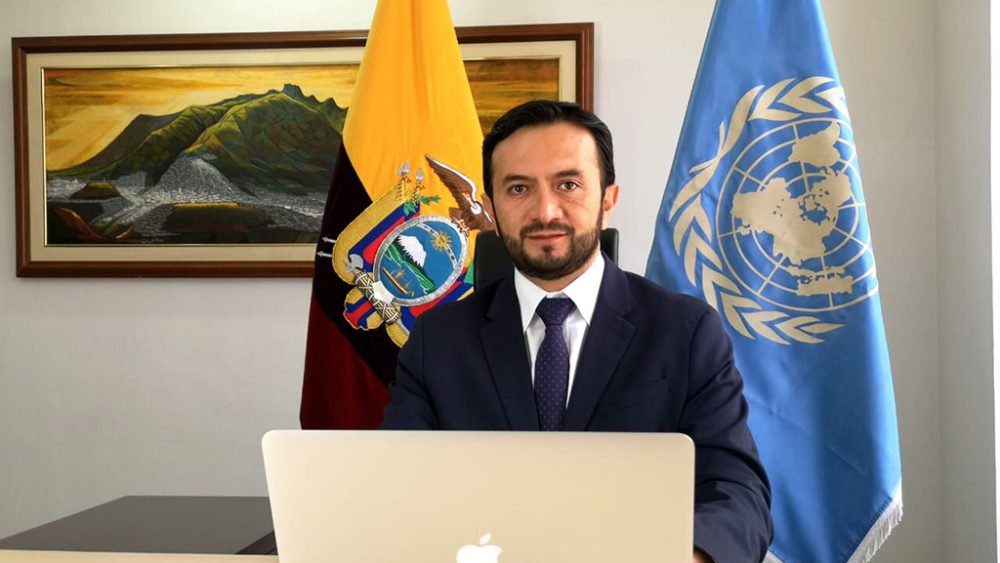October 1 is World Cocoa Day. For the occasion, Eddie Pesántez was interviewed to learn about the importance of this product to the Ecuadorian economy.
- What does cocoa production mean to the Ecuadorian economy?
According to Public Agricultural Information System data, the main agricultural item by cultivated area is cocoa, with 498,794 ha. The estimated production is 313,284 tons, the average yield is 0.63 t/ha and the resulting income in 2019 was 657,255,616 USD. Income in 2020 is projected to be 775,064,000 USD in exports. Cocoa generates approximately 600,000 jobs throughout the Agro-Productive Chain, energizing the country’s economy and making it one of the highest job creators.
- At present, what characterizes Ecuadorian cocoa and how has demand for this product increased in recent years in international markets?
Ecuador is the leader in producing fine aroma cocoa. The approximate volume is 200,000 tons per year, and worldwide demand is increasing every year, strengthening its extension and productive growth. Ecuadorian cocoa has a distinctive aroma and flavor that are popular with chocolate manufacturers, and represents only 5% of all cocoa produced worldwide. Due to its geographical characteristics, Ecuador is the producer par excellence of fine aroma cocoa, and has a 63% share of world production.
- How does normal cocoa production differ from sustainable production? What are the short- and long-term effects of using these methods?
Sustainable production respects the environment and also focuses on community development. Sustainable cocoa production includes not only productive aspects, but also others such as: strengthening associativity, implementing traceability systems, Good Agricultural Practices, and others. All this contributes to a product with excellent characteristics that are desired in specialized international markets. Furthermore, in this way we ensure the preservation of the environment for future generations.
- What is the perception of our cocoa and its products in international markets?
“National” cocoa is unique in the world, with its short fermentation and incomparable flavor and aroma, and its fruity, floral or woody flavors. Ecuadorian cocoa has the most diverse flavors and aromas in the world. Cultivating it on the Coast, in the Highlands and in the Oriente generates specific fine flavors. This type of cocoa is used to make refined high-quality chocolates. The varieties of most Ecuadorian cocoa are National, Trinitario and Forastero.
- What actions does the Ministry of Agriculture and Livestock take to support cocoa producers and prevent the expansion of the agricultural frontier in the Ecuadorian Amazon?
The Ministry of Agriculture and Livestock has productive projects for strengthening the Amazon cocoa sector, and in coordination with MAAE and UNDP, it established the first “INTEGRAL AMAZON PROGRAM FOR FOREST CONSERVATION AND SUSTAINABLE PRODUCTION” (PROAMAZONÍA), to help reduce deforestation. The main role of MAG is to implement actions for achieving sustainable production systems with a chain approach (improved productivity, traceability, certification, access to markets, incentives, consumers). PROAMAZONÍA has supported 8,500 producers in four productive chains in the Amazon: coffee, cocoa, livestock and palm.
- How does agricultural policy strengthen current and future production of Ecuadorian cocoa?
National Agricultural Policy seeks prosperous, competitive, sustainable and inclusive agriculture, based on innovation and differentiated by quality, and sensitive to national and international market demands to guarantee food security and sovereignty and promote exports.
Our policy has 6 axes:
- Promotion of Quality and Productivity.
- Market Development.
- Access to Services and Infrastructure.
- Associativity and Cooperativism.
- Environmental Sustainability, Climate Change Adaptation and Mitigation
- Institutional and Legal Modernization and Innovation
With this we can ensure that the new agricultural policy favors the Ecuadorian cocoa production chain and other productive chains.
7. How does the Premium and Sustainable strategy contribute to the production of sustainable, deforestation-free products?
This initiative aims to make Ecuador a world benchmark of high-quality agroindustrial production, sustainability and transparency by 2030.
Through the Ecuador Premium and Sustainable brand, we show the world that our production is based on criteria such as: deforestation-free products, zero rural poverty, empowerment of women and rural youth; quality, traceability; and associativity leading to modern cooperativism. SUSTAINABILITY will differentiate our production in the international market.

 Español
Español English
English
